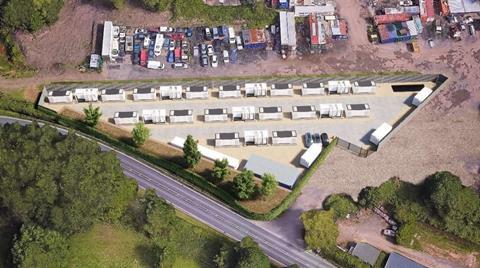Faciltiy was rejected by Trafford council last year due to fears over its impact on surrounding countryside
A council’s rejection of a battery storage scheme near Manchester has been overturned by the planning inspectorate using the government’s new grey belt rules.
The 35MW facility in Carrington was rejected by Trafford council last August because it was deemed to be damaging to the visual appearance and character of the surrounding countryside.
However, it has now been approved following an appeal by its developer O&G Solar after planning inspector Gareth Thomas said the 0.9 acre Wild Fowl Farm site could be classed as grey belt in one of the first planning decisions to use the new land designation.

The grey belt land class was introduced by the government in December last year in a major overhaul of the National Planning Policy Framework (NPPF) as part of a drive to allow more development on the green belt.
It is defined as green belt land which “does not strongly contribute” to three of the five green belt purposes, namely preventing urban sprawl, preventing towns merging into one another and preserving the setting of historic towns.
>> See also: ‘Frankly, what’s the alternative?’ Turley’s Stephen Bell applauds the government’s planning vision
Thomas said in his ruling that the site is not “important in preventing the unrestricted sprawl [and] does not make a strong contribution to the purposes of preventing the merging of towns”.
He added: “I have found that the proposed development would utilise grey belt land and would not amount to inappropriate development in the green belt.”
Thomas also concluded that the scheme would align with Trafford council’s ambitions to become a carbon neutral local authority and with the net zero targets of the wider Greater Manchester Combined Authority.
Battery energy storage facilities are used to manage fluctuating power generation from renewable sources like solar and wind, storing excess energy when demand is low so it can be released back into the grid when demand rises.
The government has pledged to decarbonise 95% of the UK grid by the end of this decade in a highly ambitious programme which will require significant numbers of new battery storage schemes to manage increased levels of renewable energy generation.
It has also said the target will require the construction of new pylons across the country to link renewable energy sources with population centres.



























No comments yet